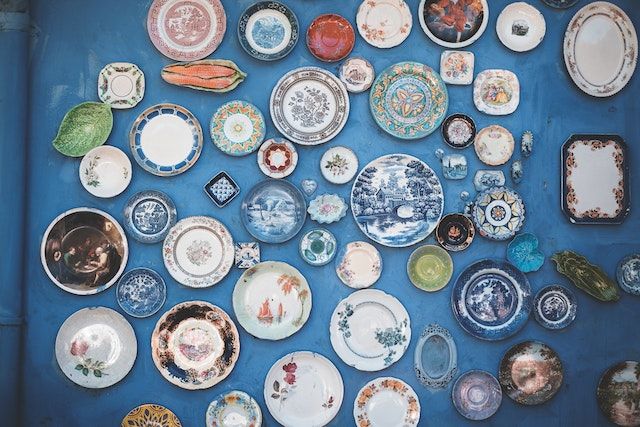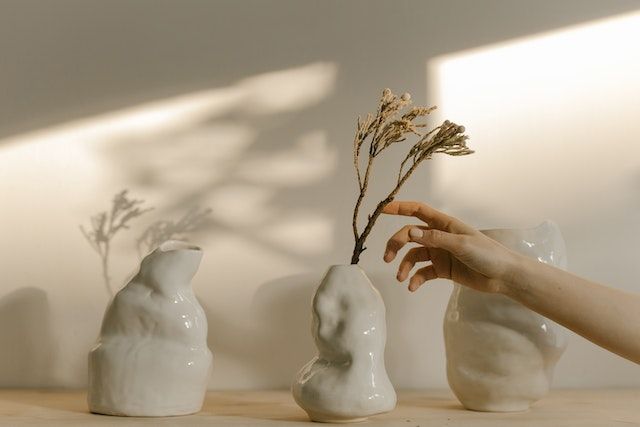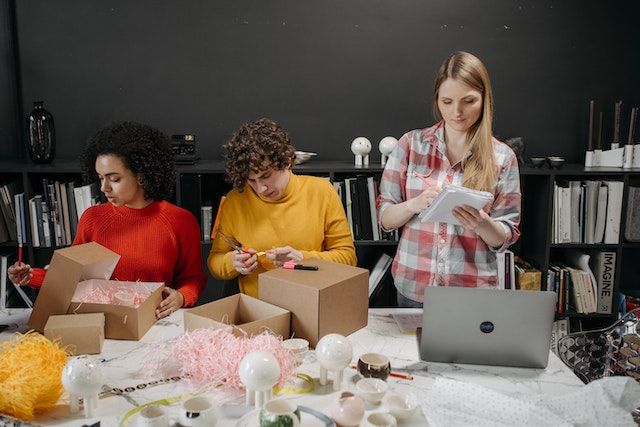Beginner's Guide to Collecting Ceramics
Posted by Claire Kramer on 19th Jun 2023
Beginner's Guide to Collecting Ceramics
Are you captivated by the artistry and elegance of ceramics? Do you find yourself drawn to the intricate designs and exquisite craftsmanship? If so, you're not alone. Collecting ceramics has long been a passion for enthusiasts worldwide, offering a window into various civilizations' rich history and cultural heritage. Whether you're an aspiring collector or simply fascinated by the beauty of these delicate creations, this beginner's guide will provide you with the essential knowledge and practical tips to embark on your ceramic journey. In this guide, we will explore the diverse world of ceramics, how to build your collection, care for your precious pieces, and, ultimately, unlock the beauty of collecting them. So, let's delve into the enchanting realm of ceramics and design a nature-inspired home filled with artistic treasures.
Exploring the World of Ceramics
Ceramics, with their rich history and diverse forms, have long been revered as a true art form. Each ceramic type carries unique beauty and cultural significance, from delicate porcelain to sturdy stoneware. So, let's embark on a journey of discovery.
Types of Ceramics
Ceramics encompass a wide range of materials, each with its distinctive characteristics. Three primary types are commonly encountered:
- Porcelain: Known for its translucent quality and fine texture, porcelain is often associated with elegance and refinement. Originating in China, this delicate ceramic is highly prized for its purity and exquisite craftsmanship.
- Stoneware: Stoneware ceramics, recognized for their durability and versatility, are fired at high temperatures, resulting in a dense and sturdy material. With a wide range of glazes and finishes, stoneware can take on various forms, from functional kitchenware to decorative sculptures.
- Earthenware: The oldest type of ceramic, earthenware is fired at relatively low temperatures, resulting in a porous material often coated with colorful glazes. This type of ceramic is celebrated for its rustic charm and accessibility.
Porcelain is highly valued due to its craftsmanship.
Historical Significance of Ceramics
Ceramics have played a vital role in human history, serving functional and artistic purposes. Throughout different eras and cultures, they have served as vessels for storing food and water, symbols of status and wealth, and expressions of artistic creativity. From ancient civilizations like Mesopotamia and Egypt to the golden age of Chinese porcelain and the European Renaissance, ceramics have left an indelible mark on our collective cultural heritage.
Cultural Importance of Ceramics
Ceramics offer a glimpse into different cultures' traditions, aesthetics, and values. The designs, motifs, and techniques often reflect a particular society's beliefs and customs. For instance, Japanese ceramics embrace the concept of wabi-sabi, finding beauty in imperfection and transience, while Islamic models feature intricate geometric patterns inspired by their faith. Collectors gain a deeper understanding of our shared human experience by studying ceramics from different cultures.
From Novice to Connoisseur: Building Your Ceramic Collection
Now that we have explored the world of ceramics and gained an appreciation for their artistry, it's time to embark on the journey of building your collection. Whether you're a novice collector or a seasoned connoisseur, acquiring ceramics is thrilling and rewarding.
Research and Educate Yourself
Before venturing into the world of collecting ceramics, it's crucial to research different ceramic artists, styles, and periods. Familiarize yourself with renowned ceramicists, their techniques, and the distinguishing features of their work. Books, online resources, and visits to museums or galleries are excellent sources of information to expand your knowledge and refine your taste.
Research is essential when collecting ceramics.
Determine Your Focus and Budget
Ceramic collecting encompasses a vast array of styles and forms. Decide on the specific focus of your collection, whether it's a particular period, region, or type. Setting a budget will also help guide your choices and ensure a balanced and manageable collection.
Explore Various Sources
To find unique and desirable ceramics, explore various sources. Visit antique stores, flea markets, and art fairs to discover hidden gems. Online platforms and auctions offer convenient access to a wider range of ceramics worldwide. Engage with local artisans and attend ceramic exhibitions to support contemporary ceramic artistry.
Consider Condition and Authenticity
When acquiring ceramics, carefully examine the condition of each piece. Look for cracks, chips, or repairs affecting its value and aesthetic appeal. Additionally, learn to identify markings, signatures, and other indicators of authenticity to ensure the pieces you acquire are genuine.
Display and Enjoy Your Collection
Once you've started building your ceramic collection, create a space to display and appreciate your treasures. Showcasing ceramics in your kitchen can infuse it with style and personality. Use shelves, cabinets, or open wall space to arrange and highlight your collection. Consider rotating and rearranging your collection periodically to bring fresh energy to your living spaces.
Caring for Your Precious Ceramics
Once you have begun building your ceramic collection, it's essential to prioritize the care and maintenance of your precious pieces. Ceramics, with their delicate nature, require proper handling, storage, and maintenance to ensure their longevity. Let's explore ways to protect fragile pieces and delicate items, ensuring the safety of your collection.
Gentle Handling and Cleaning
Handle your precious pieces carefully, as they can be fragile and prone to damage. When moving or cleaning your pieces, use both hands to support and distribute the weight evenly. Avoid applying excessive pressure or force that could lead to cracks or breakage. Use a soft, lint-free cloth or a brush with fine bristles to gently remove dust or dirt. Avoid harsh chemicals or abrasive cleaning agents that may harm the surface of your ceramics.
Proper Storage and Display
Proper storage is crucial to protect your ceramics when they're not on display. Consider the following tips:
- Use acid-free tissue paper or soft cloth to wrap individual pieces, providing cushioning and preventing scratches.
- Avoid stacking them directly on top of one another, leading to chipping or breakage. Place a layer of padding, such as felt or foam, between each item.
- Store ceramics in a cool and dry environment to prevent moisture damage. Avoid areas with extreme temperature fluctuations, high humidity, or direct sunlight, as these can cause warping, fading, or discoloration.
- If you have limited storage space, consider using specialized storage containers or cabinets with adjustable shelves to accommodate different sizes and shapes.
Using Packing Materials
When transporting or shipping delicate ceramics, opt for eco-friendly packing materials that provide ample protection while minimizing environmental impact. Consider these sustainable ways to protect fragile pieces:
Biodegradable packing peanuts: Instead of traditional foam peanuts, choose biodegradable options from cornstarch or recycled paper. These materials are compostable and reduce waste.
Recycled bubble wrap or air pillows: Look for packing materials made from recycled plastic that can be reused or recycled after use.
Eco-friendly packing paper: Replace single-use plastic bubble wrap with eco-friendly alternatives such as paper-based cushioning materials or corrugated cardboard wraps.
Seek out reusable packaging options: Explore reusable foam inserts or fabric wraps that can be reused, minimizing waste and reducing your ecological footprint.
Be very careful when packing your ceramics.
Start Collecting Today
Collecting ceramics is a captivating and fulfilling pursuit that allows you to immerse yourself in the beauty and artistry of these exquisite creations. Through this beginner's guide, we have explored the diverse world of ceramics, discussed the essential steps to build your collection, and highlighted the importance of caring for your precious pieces. So, why wait? Start your ceramic journey today and experience the joy of bringing art into your life.
Author bio:
Claire Kramer is an avid collector and passionate advocate for ceramics. With years of experience building and caring for her collection, she shares her knowledge and insights to inspire others in their ceramic journey.



